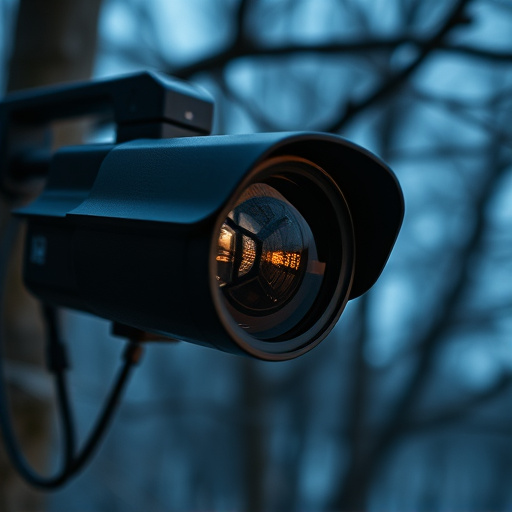Battery-powered wireless spy cameras, disguised as everyday objects, require RF technology knowledge for detection. Using specialized tools like RF detectors, thermal imaging cameras, and metal detectors, individuals can safeguard their privacy. In the digital era, RF scanning is a crucial non-invasive method to identify hidden cameras in high-security areas, offering advanced privacy protection. Best practices include controlling environmental interference, visualizing potential hiding spots, regular equipment calibration, and staying informed about countering technology.
Uncover hidden threats with our comprehensive guide on detecting battery-powered wireless spy cameras. In today’s digital age, privacy concerns are at an all-time high, making the ability to identify these clandestine devices paramount. This article equips you with essential knowledge about battery-operated wireless spy cams and powerful RF technology used for detection. From understanding their unique characteristics to employing effective search methods, we provide practical insights for professionals and concerned individuals alike.
- Understanding Battery-Powered Wireless Spy Cameras
- Tools and Equipment for Detection
- Identifying Hidden Cameras Using Radio Frequency (RF) Technology
- Best Practices for Safe and Effective Searches
Understanding Battery-Powered Wireless Spy Cameras
Battery-powered wireless spy cameras have become increasingly sophisticated, offering a discrete and seemingly innocent way to capture private moments. These tiny devices are designed to blend into their surroundings, often resembling everyday objects like lightbulbs or smoke detectors. They operate on batteries, allowing for remote and hidden surveillance without the need for complex wiring. This portability makes them a popular choice for both professional investigators and individuals seeking privacy protection.
Understanding how these cameras function is crucial in detecting their presence. Many battery-powered wireless spy cameras use radio frequency (RF) technology to transmit video signals to a receiver or app on your smartphone. By learning about common RF frequencies used by such devices, you can employ tools like signal detectors or apps designed to identify hidden camera transmissions. This proactive approach enables individuals to safeguard their privacy and create safer environments.
Tools and Equipment for Detection
Detecting hidden cameras, especially battery-powered wireless spy cameras, requires specialized tools and equipment. One of the primary tools for this task is a radio frequency (RF) detector. These devices are designed to pick up signals from various electronic devices, including covert cameras that transmit data wirelessly. Advanced RF detectors can identify specific frequencies associated with spy cams, making it easier to pinpoint their location.
In addition to RF detectors, other useful tools include thermal imaging cameras and metal detectors. Thermal imaging devices can reveal temperature differences caused by electronic components hidden within walls or other surfaces. Metal detectors are effective in detecting any metallic parts of the camera setup, such as tripwires or the camera body itself. Combining these tools allows for a thorough inspection, ensuring that even the most discreetly placed battery-powered wireless spy cameras are detected and neutralized.
Identifying Hidden Cameras Using Radio Frequency (RF) Technology
Identifying hidden cameras has become a critical skill in today’s digital era, where battery-powered wireless spy cameras are increasingly common. Radio Frequency (RF) technology offers a powerful tool for detecting these clandestine devices. RF detectors can pick up on the unique signals emitted by many electronic devices, including those used in covert surveillance. By scanning through various frequency bands, these detectors can uncover hidden cameras that might be transmitting data wirelessly. This is particularly useful in high-security areas where professional individuals need to ensure privacy and safety.
RF technology allows for a non-invasive method of camera detection, making it an attractive option for discreet operations. The ability to identify these devices without physical interaction or visible indicators ensures a more comprehensive security approach. Moreover, with advanced RF detectors, it’s possible to pinpoint the exact location of the hidden camera, providing valuable intelligence in preventing and investigating potential breaches of privacy and security.
Best Practices for Safe and Effective Searches
When conducting searches for hidden cameras, particularly battery-powered wireless spy cameras, adhering to best practices ensures safety and effectiveness. Start by understanding that these devices often operate on radio frequencies (RF), making them detectable with specialized equipment. Conducting thorough searches in controlled environments is crucial; avoid areas with electronic interference from devices like microwaves or cordless phones.
Visualize potential hiding spots, as these cameras can be discreetly placed. Inspect surfaces for any anomalies, such as subtle bumps or markings. Utilize RF detectors designed to pick up signals from wireless spy cameras, scanning through different frequencies to identify suspicious activity. Regularly calibrate your equipment and stay updated with the latest technology to counter sophisticated hidden camera setups.
In the quest to uncover hidden surveillance, understanding battery-powered wireless spy cameras and their radio frequency (RF) signatures is a game-changer. This guide has equipped you with essential tools and knowledge to detect these clandestine devices effectively. By employing RF technology, you can navigate the labyrinthine world of hidden cameras, ensuring your privacy and safety in today’s digital era. Remember that vigilance and safe, practiced searches are key to maintaining control over your personal space.
